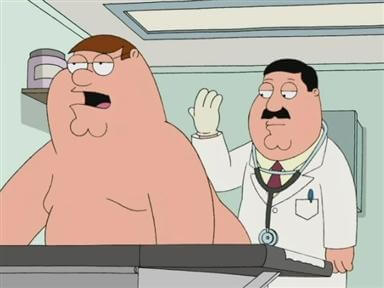Prostate Cancer – To Test or Not To Test

Share
New studies in prostrate cancer screening reveal conflicting views about the importance of getting men tested for the disease. Research headed by Hans Lilja at the Memorial Sloan Kettering Medical Center suggests that a single test for prostate specific antigen (PSA) given at age 60 could accurately predict mortality from prostate cancer. 90% of deaths were found in men with high concentrations of PSA. Those with low amounts of PSA (approximately half of all men) could avoid all further screening in the future without significant risks for death. Phillip Dahm at the University of Gainesville suggests, however, that screening men for prostate cancer may be a waste of time in general. His research team found that prostate tests (those looking at PSA with or without rectal exam) had no net benefit on society at large. There was no significant change in death rates among those that got examined and those that didn't. General male mortality, and the slow growth of many prostate cancers, makes testing less helpful for large populations than is generally thought. Both studies were recently published in the British Medical Journal. The question remains, should men be routinely screened for prostate cancer? While individuals with high risk can reap big benefits from modern tests and treatments, the population as a whole needs to reconsider prostate screening.
Prostate cancer is one of the most common killers of men in industrialized nations. Among cancers in the US it ranks second behind skin for most fatalities. Preventative screenings, whether tests for PSA or probing for abnormalities in the gland using a rectal exam, are generally seen as the most successful means for detecting prostate cancer. Yet increased diagnoses do not necessarily translate to decreases in deaths, as some detected prostate tumors are very slow growing and non-fatal. There has been a rise in concern that over-treatment (especially surgery) may lead to decreases in quality of life through erectile-dysfunction and incontinence. So we've arrived at a time when many are trying to consider whether testing is really worth it.
First, let's look at the argument against regular screening. Dahm's team performed a wide meta-analysis of six other major studies on prostate testing, with a total number of 387,286 men. Researchers compared those men who were screened for prostate cancer (PSA with or without rectal exam) with those who had no screening. Those who received testing had an increased rate of diagnosis, and increased reported cases of stage I prostate cancer. Yet the two groups did not have any significant difference in the overall death rates. That is, even though the screened group detected prostate cancer cases this didn't lower the mortality for the group as a whole.
Many doctors already consider testing older men (75 and up) for prostate cancer to be of minimal benefit, because so few will actually die from the disease even if they have a tumor. That's to be expected with general mortality rates being high in the age group. Dahm's study suggests that perhaps all men should likewise go without. As a whole, men don't seem to benefit from prostate screening.
Yet Dahm and his associates are quick to point out the limitations of their study. Really, they point out how mediocre the data collected by prostate cancer screening studies has been. Many of the results they analyzed showed poor accounting for biases between those screened for PSA and those not tested (the control arm of the study). They further noted that there was little separation (or accounting) of those high-risk patients such as men with history of prostate cancer or racial groups that have an increased incidence of the disease. Dahm and his colleagues note that it was not really possible to stratify their results by age, leaving question as to whether there is a reasonable cut off age (60, 65, 75?) beyond which testing for prostate cancer should generally be ignored.
For their part, Hans Lilja and his team suggest that there may be a way of drastically cutting down on the amount of prostate cancer screening and still reaping the most potential benefits. Their study of 1167 men who received PSA analysis at the age of 60 showed a remarkable correlation between test results and eventual mortality. Most men who tested above 2ng/mL for PSA wouldn't die from prostate cancer. But of the men who did die from prostate cancer, 90% came from that group. This means that while a high PSA count isn't a good indicator for mortality, a moderate or low count (<1ng/mL) is a good indicator for low risk. Of those who tested below 1ng/mL only 0.5% would develop metastasized prostate cancer, and only 0.2% would die from it. So, if you get a PSA test at 60, and your levels are below 1ng/mL this study suggests you don't need any further prostate screening for the rest of your life. This would affect roughly 50% of all men. Boom, we just cut prostate screening in half.
Be Part of the Future
Sign up to receive top stories about groundbreaking technologies and visionary thinkers from SingularityHub.


Well, I might have boomed too soon. The Lilja work has its own drawbacks. Foremost is the group of patients studied. The data collected was from the Malmo Preventive Project in Sweden, which examined men and women in the late 70s and early 80s for all types of health problems. (Nearly?) all of the subjects in the study were Swedish, and 89% of Sweden is of the same ethnic group (as of today, chances are this number would be even higher when the data was collected). Since we know that prostate cancer has some ethnic correlations, this data needs to be repeated for other groups before we can generalize its findings.
Also, blood work for the 1167 men was collected at age 60 in the year 1981. They were then followed until age 85 or until they died, placing the latest portion of the followup for the study roughly in 2005. Advances in prostate treatments in the last 30 years would be unevenly applied to the test subjects depending on when they were diagnosed. There were just 43 cases of metastasis and 35 cases of death. While these are statistically significant numbers, it would be great to see this study repeated on a much larger scale.
One study tells us that general prostate screening for every man is probably a waste of time. The other study tells us that we should simply be more selective with who gets tested and when. Both studies cannot help us discuss high risk patients (who should probably get examined regularly) or help us understand the costs and benefits of testing for prostate cancer among younger men.
It seems like whenever I read these reports I end up with more questions than I do answers. Yay science.
I should point out, however, that while prostate cancer screening may be in question, prostate treatments are benefiting from advances in technology. A growing number of prostate surgeries are performed with robotic instruments, reducing instances of erectile dysfunction and incontinence that are often described as post-surgical complications. There are a non-surgical treatments for prostate cancer, including the Provenge therapy which specifically aims to increase life expectancy among those with advanced metastasized forms of the disease. Testing protocols for prostate cancer likely need to change, and soon, so that men everywhere will know if and when they can benefit from these emerging treatments. Our fight for longevity marches forward even if our steps do get a bit muddled at times.
[image credit: 20th Century Fox]
[source: Djulbegovic et al and Vickers et al BMJ 2010, Reuters, BBC News]
Related Articles

This Week’s Awesome Tech Stories From Around the Web (Through December 20)

Data Centers in Space: Will 2027 Really Be the Year AI Goes to Orbit?

New Gene Drive Stops the Spread of Malaria—Without Killing Any Mosquitoes
What we’re reading
